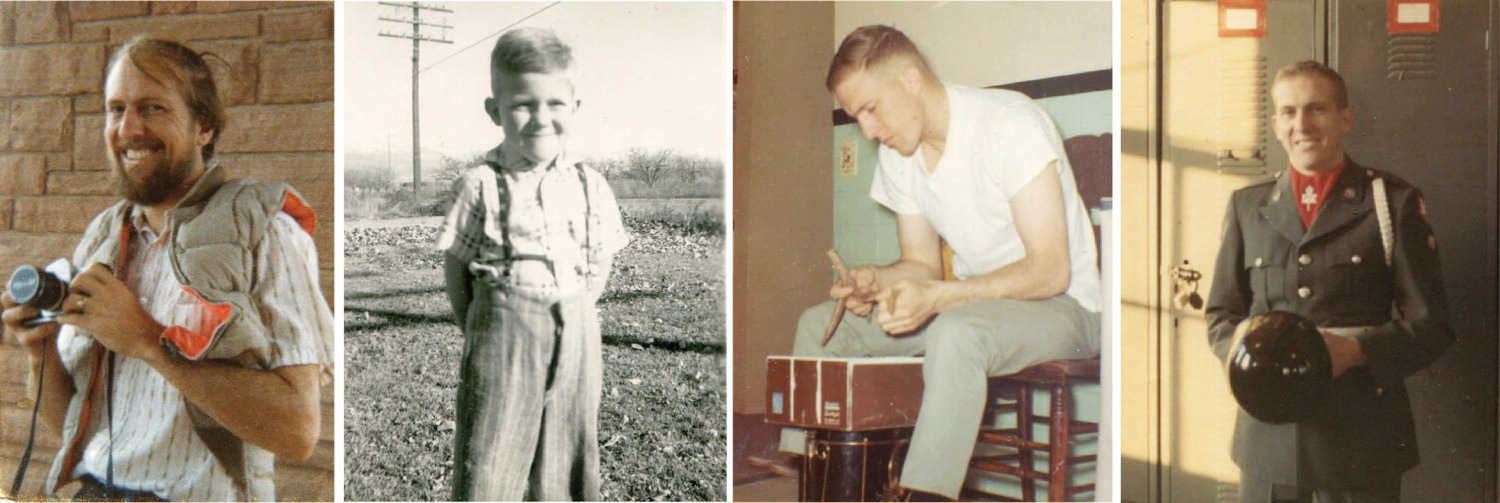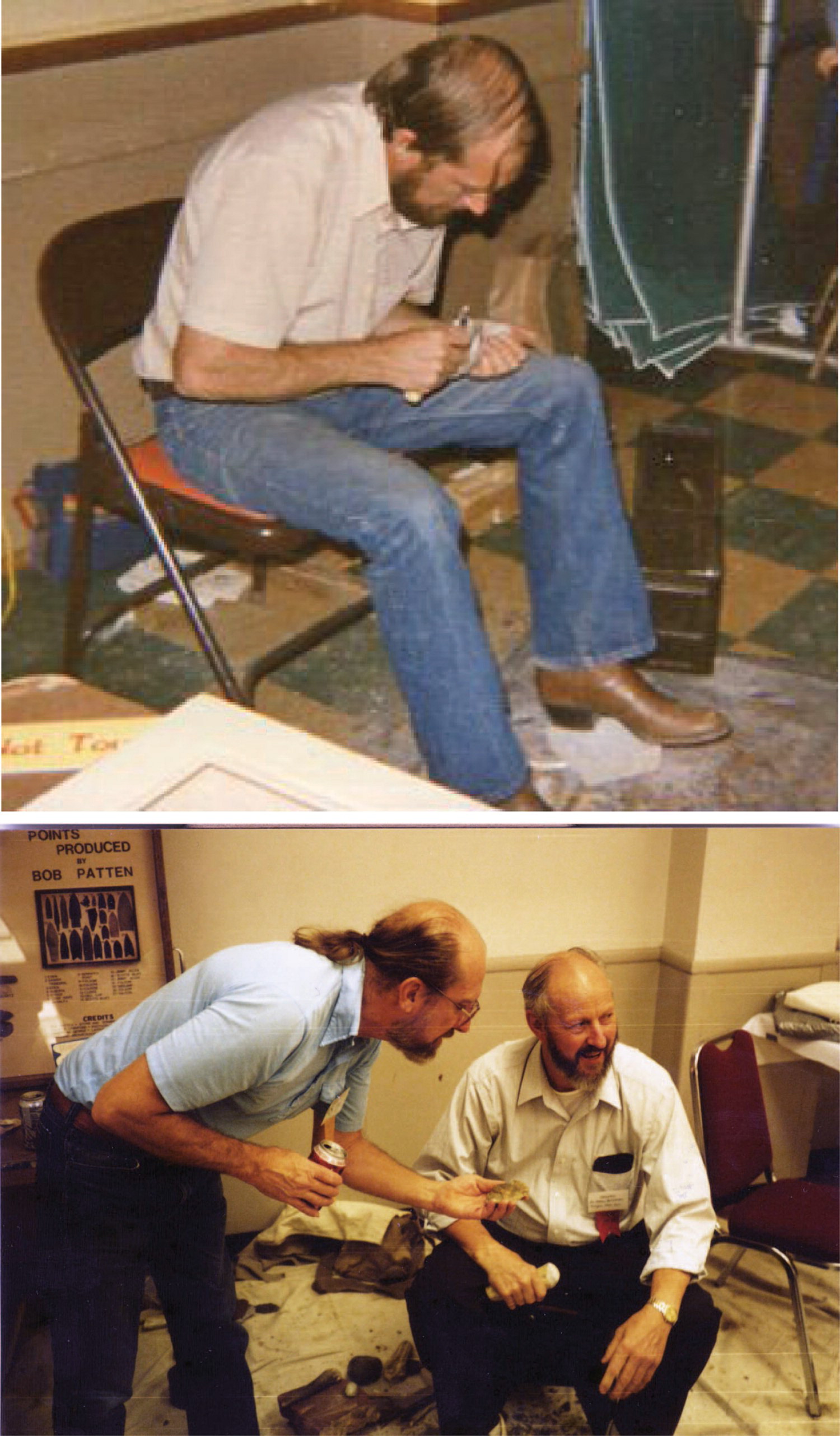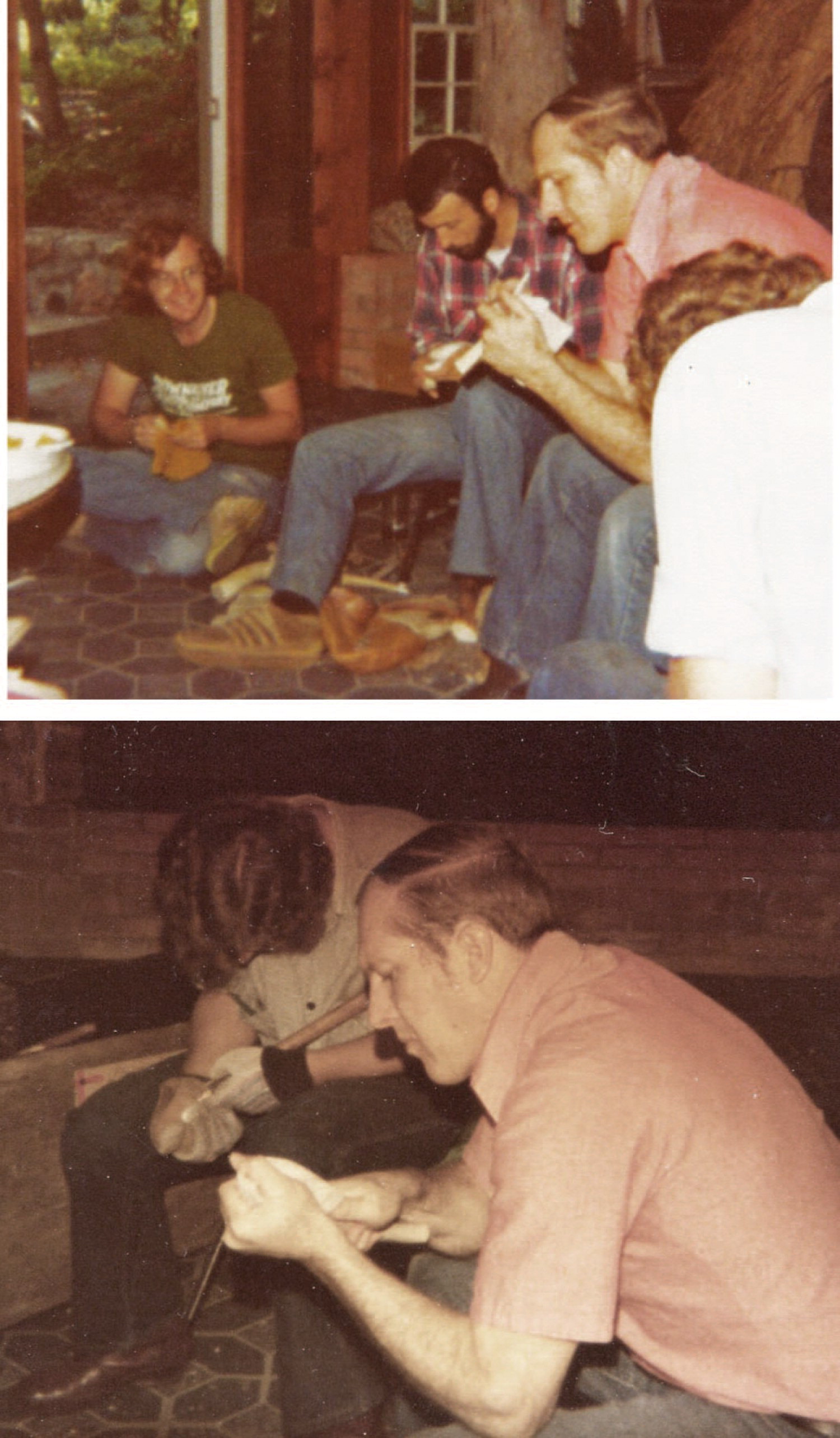
“For good or bad … I wanted to steer my own direction, and I wasn’t too concerned with finding somebody who had already blazed a trail … no, I said, I can blaze my own trail to see where it leads.”
—Robert J. Patten, 2011
Robert J. Patten was born on March 4th, 1944, in the Grand Valley of western Colorado, where his family had homesteaded in the late 1800s. As a boy, hearing his grandfather’s tales of seeing the Ute leader, Chipeta, migrating through the valley with her people, Patten became intrigued with the stone artifacts he found on his boyhood wanderings, and particularly with how they were made. Having only rudimentary information available, and no one to teach him, his early attempts at replication were necessarily awkward, and sometimes painful, but ultimately they led to a lifelong obsession with flintknapping (Patten, 2011) (Figure 1). Indeed, what makes Patten’s knapping talent so remarkable is that he was not taught, or even influenced, by any other knapper (Patten, 2011).

Figure 1. Bob Patten at the Colorado National Monument; As a boy in Clifton, CO; Flintknapping as a teenager; US Army, 1967.
During his high school years, Patten worked summers as a rodman for the US Geological Survey and, deciding that getting paid to explore the landscape was exactly the career he wanted, he enrolled at Colorado State University to pursue the required Civil Engineering degree. In 1964, still in college, Patten was introduced to the Loveland Stone Age Fair, an annual gathering of artifact collectors that had begun in the 1930s (Figure 2). Thrilled at finding others who shared his passion for stone tools, Patten began demonstrating his now-accomplished flintknapping skills, at first, in the parking lot. But when interested crowds began to gather, he was quickly invited to become an integral part of the fair, an association that was to last more than 50 years.

Figure 2. Patten at the Loveland, Colorado Stone Age Fair. Top: giving a knapping demonstration; bottom: with Rob Bonnichsen.
Upon graduating CSU in 1966, Patten was forced to put his Geological Survey aspirations on hold when his Army draft number came up low. To get a favorable assignment, he chose to enlist, a move that would allow him to utilize his new degree (Figure 1). He was to spend the next three years in the D.C. area, teaching cartographic drafting at Fort Belvoir, and later, creating computer simulations in Bethesda, MD. His off-duty time he spent exploring the Smithsonian, or fossil hunting along the Chesapeake.
Once discharged, Patten returned to his native Colorado to accept the long-awaited cartography field position with U.S.G.S., a job that took him on an annual circuit throughout the Rocky Mountain Region, from Montana to Texas. For Patten, it was the perfect assignment, allowing him autonomy, and the chance to constantly explore new landscapes. During brief stays in innumerable small towns, he haunted libraries and museums, researching whatever he’d happened to discover during his off-hours, be it artifacts, antiques, or dinosaur fossils.
But inevitably, the field-mapping project was completed and Patten was assigned a position in the Survey’s Lakewood, CO office. In 1976, to temporarily escape the politics and confinement of his desk job, he requested a six-month detail at the Survey’s main office, in Reston, VA. In hopes of finding other knappers in the area, Bob contacted Dennis Stanford at the Smithsonian, whom he’d met some years earlier while visiting the Jones-Miller bison kill site.
Dennis directed him to Scott Silsby, a local flintknapper, who invited him to a Christmas party hosted by the Northern VA chapter of the Virginia Archaeological Society. It was there that Bob met his future wife, Laurey, who was working on a graduate degree in archaeology at George Washington U, and moon-lighting weekends at the Natural History Museum, where Patten soon became a regular visitor. On their first outing together, an archaeological field survey followed by a fossil hunt along the Potomac, Bob demonstrated his interest by knapping her a fully fluted Clovis point – quite a statement, for a first date.
The following summer, the two helped to organize a flintknapping get-together at the Long Branch Nature Center, in Arlington, VA, dubbing it a “knap-in” (because, after all, it was the ‘70’s), a designation that was quickly to become ubiquitous for all such gatherings (cf. Whittaker, 2004, pp. 64–65) (Figure 3). Among those attending were Stanford, Silsby, Errett Callahan, Bruce Bradley, Mike Johnson, Bob Humphrey, Jack Cresson, and many other notables, both archaeologists and knappers alike.

Figure 3. 1977 Knap-in, Arlington, VA – Top: Bob Verrey, Mike Johnson, Bob Patten; Bottom: Scott Silsby and Bob Patten.
Bob and Laurey were married in the Spring of 1978, and returned to Colorado, where Bob was eventually put in charge of the U.S.G.S.’s Photo-lab contract. Each June, the two hosted the Colorado Front Range Flintknapping Workshop at their home in Lakewood, an event which was to continue for more than 35 years. During that time, and especially after his retirement from the Survey, in 1997, Patten wrote and illustrated three flintknapping/archaeology books, with Laurey acting as editor, sounding board, and artistic contributor.
In 2003, on a trip to Guatemala hosted by John Clark, of B.Y.U., Patten found inspiration for his fourth book, a detailed thesis on Mayan knapped stonework and its connection with mathematical and astronomical observations. The book was nearing publication when Bob Patten passed away, very suddenly, from an undiagnosed heart ailment on February 8th, 2017.
For a more detailed view of Robert J. Pattens life, his work, and his legacy, please see:
